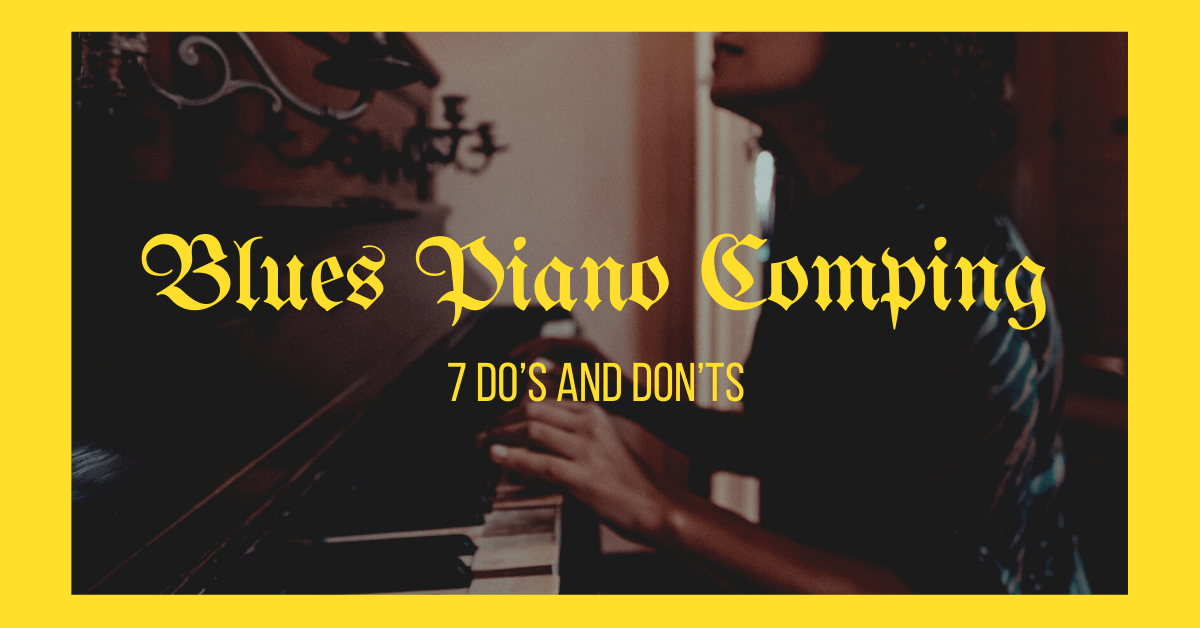Blues Piano Comping - 7 Do's and Don'ts

Blues piano comping is the topic of this article, in which we'll be discussing 10 "do's and don'ts." Of course, these 10 tips can easily apply to comping in any genre - blues, jazz, rock, pop, etc. Being able to implement these tips in your playing is usually the difference between inexperienced players and true veterans.
1. Blues Piano Comping DO: Be Rhythmic and Build the Groove
Comping is about "accompanying" the featured soloist. As the pianist, you're basically responsible for providing the beautiful background upon which the soloist can paint an eye-popping subject. Be rhythmically responsive and complimentary to what the soloist plays. Many young players are afraid of playing the same comping rhythm over and over again. But sometimes that's exactly what you should do. That's how you build a groove.
2. Blues Piano Comping DON'T: Playing That Is "Too Busy"
Although you want to be responsive to the soloist, remember that when you're comping you are NOT the soloist. Some pianists try to stand out with a sort of "look at me and all the things I can play" approach to comping. That is not what is best for the soloist, so it's usually not what's best for the music either.
3. Blues Piano Comping DO: Use Dynamics
Sometimes the easiest thing to play can be hugely effective and make a big difference to the listening audience. Dynamics are one such thing. Simply by playing with very stark "louds" and "softs" you can affect a LOT within the music and the other players. This doesn't require a ton of chops or advanced solo skills, and it is a great way to control aspects of the music.
4. Blues Piano Comping DON'T: Using Extreme Registers
Sometimes the use of extreme piano registers (high and low) can be very effective and powerful. So the advice is to use it sparingly. The meat-and-potatoes of the majority of comping tasks is right in the mid-range of the piano.
5. Blues Piano Comping DO: Work With the Drummer and Bass Player
Assuming you have one or both of these players, remember that you are all members of the RHYTHM section. You're like a group within a group, responsible for a great deal of the propulsion of the music. That means the drummer or bass player may also introduce ideas which affect the groove. Listen to them closely as you do the soloist, and respond in a way that compliments the ideas they communicate.
6. Blues Piano Comping DON'T: Afraid to Use Chord Substitutions?
Don't be. Chord substitutions (like tritone subs or inserted ii-Vs) can be very helpful in a number of ways: they create variety within the rhythm section, which provides the basis for new ideas for the soloist, and interest to the ears of the listeners. Sticking to the primary chords of the blues is cool, but there is a lot more harmony than can be breathed into the blues, so don't be afraid to try.
7. Blues Piano Comping DON'T: Chord Substitutions Not Catching On?
Sometimes pianists use some pretty gnarly chord substitutions. They can often sound great, if everyone else in the band can identify the chords and catches on. But I often marvel at pianists who repeatedly use chord substitutions when it's obvious that the soloist, bass player, or guitarist aren't hip to what they're playing. The result can sound like two conflicting things are being played. So the advice? Use chord substitutions. But if it's obvious that your chord substitution is not being received by the other players after a few chances, don't hang them out to dry.